The Sickle is an asterism in the constellation Leo. It represents the head and shoulders of the lion and its shape resembles a backward question mark (indeed, as does the sickle after which the asterism is named).
The Sickle is formed of six stars: Epsilon Leonis, Mu Leonis, Zeta Leonis, Gamma Leonis, Eta Leonis and Alpha Leonis (for more on this, find out how astronomers name stars).
For more observing advice, read our guides on the best star clusters to see with the naked eye and how to use averted vision.

Leo is a great springtime constellation: one whose appearance high in the night sky marks the transition from the winter sky into the springtime sky.
Just as the reappearance of the constellation Orion in the night sky marks the return of the colder, darker months, the return of Leo means warmer, brighter and longer days are ahead.
The Sickle is a type of star pattern known as an 'asterism'. It's not one of the 88 formal constellations, rather an informally-recognised pattern of stars that has become a familiar sight to astronomers over the decades.
Other asterisms include the Coathanger asterism, the Teapot asterism, Kemble's Cascade and the Big Dipper / the Plough, which forms part of the constellation Ursa Major.
How to find the Sickle asterism

The Big Dipper, or Plough, is a useful tool for locating the Sickle. This method of navigating your way across the night sky is known as a star hop.
You may already be aware of Merak and Dubhe, the two stars that form the end of the Plough and which are used as pointers to help you find the North Star, Polaris (see image above).
If you follow the line created by those two stars in the opposite direction to the North Star in a straight line, you will eventually come to Leo and the Sickle asterism.
Once you've found the Sickle, there is a wealth of beautiful deep-sky objects that can be explored with a medium or large telescope.
Take our deep-sky tour of below and discover what the Sickle has in store.
For help finding each target, download our Sickle asterism deep-sky chart.
6 deep-sky objects in the Sickle asterism
1
NGC 3226 / NGC 3227
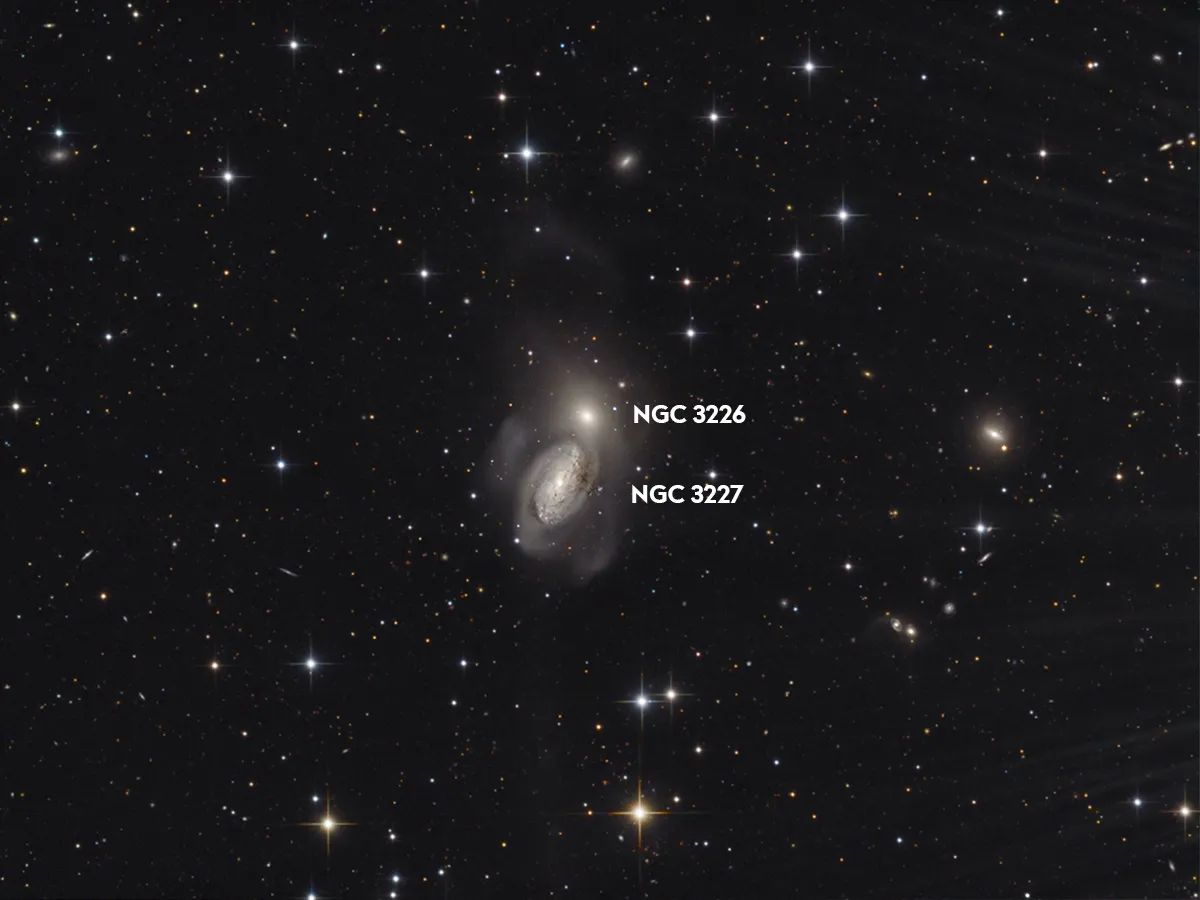
Our first targets lie 0.8° to the east and a bit north of the double star Algieba (Gamma (γ) Leonis), which is part of the Sickle asterism. Here you’ll find the two interacting galaxies, NGC 3226 and 3227.
NGC 3226 is a dwarf elliptical galaxy that shines with an integrated magnitude of +11.4. NGC 3227 is brighter at mag. +10.8 and is a spiral galaxy with an active nucleus that has been identified as a variable X-ray source.
Both galaxies can be seen as faint, indeterminate smudges through a 150mm scope, while a 250mm scope will show NGC 3226 to have a more circular form, situated northwest of NGC 3227’s elongated core.
2
NGC 3193/3190
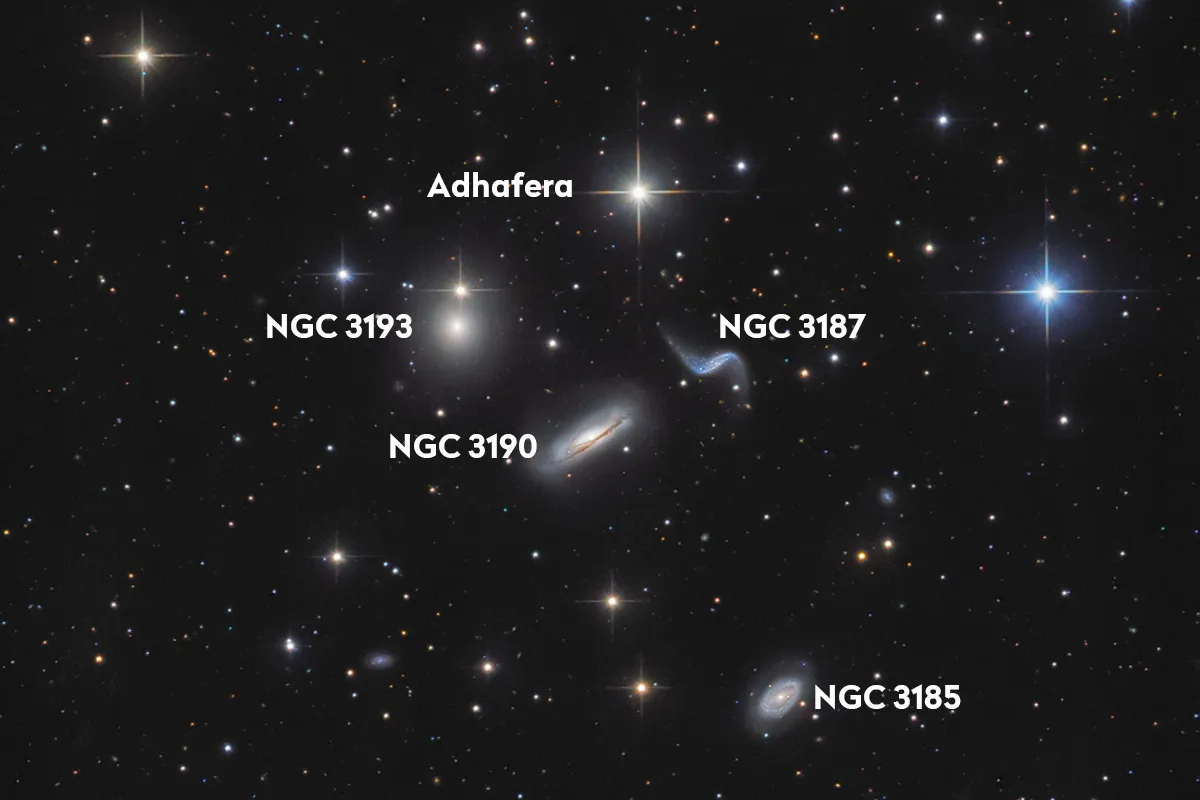
Our next target consists of multiple galaxies too. Located midway between Algieba and Adhafera (Zeta (ζ) Leonis), you’ll find, in order of brightness, NGC 3193, 3190, 3185 and 3187. NGC 3193 and 3190 have magnitudes of +10.9 and +11.0 respectively. Edge-on spiral NGC 3190 is the easiest of the four to see.
NGC 3193 is an elliptical and together with 3190 can be seen using a 150mm scope. NGC 3185 is a mag. +12.2 face-on barred spiral requiring at least 200mm of aperture. NGC 3187 is a mag. +13.1 barred spiral, but it appears faint and it will give even a 300mm scope a run for its money.
The four galaxies are gravitationally bound, forming a group catalogued as Hickson 44.
3
NGC 3162
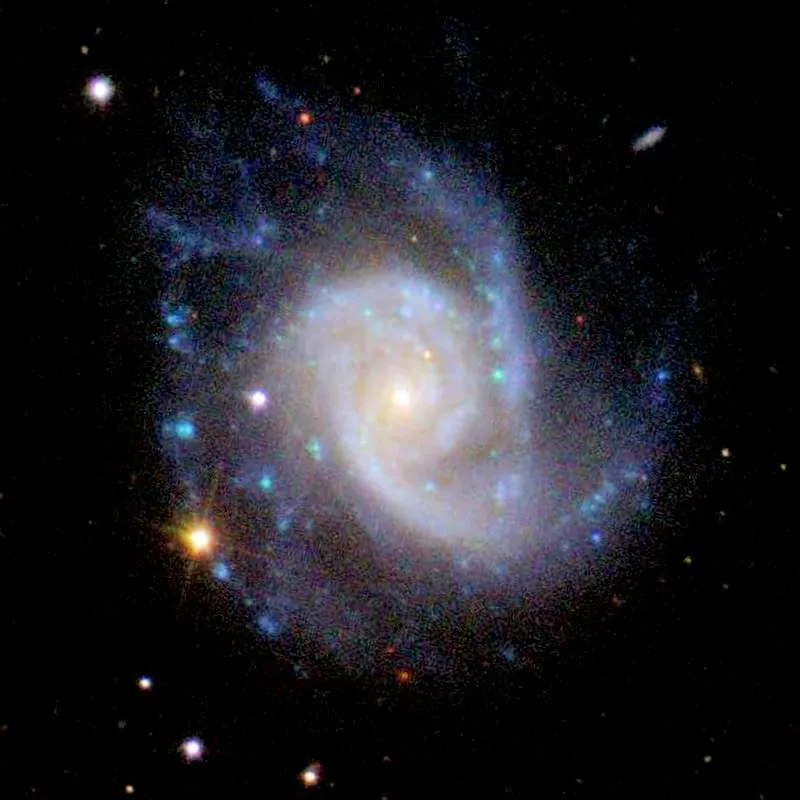
Centre your telescope on mag. +3.4 Adhafera and slew 1° to the southwest to point at our next target, spiral galaxy NGC 3162. Listed at mag. +11.6, NGC 3162 is large, its total size approaching 3 arcminutes across. It’s a distorted face-on galaxy which has a low surface brightness.
A 150mm scope will just about show it, but it will appear little more than a large, faint ‘ghost-like’ object. A 250mm telescope shows an object about 80 arcseconds across, which has a well-defined core with a star-like nucleus.
4
NGC 2916
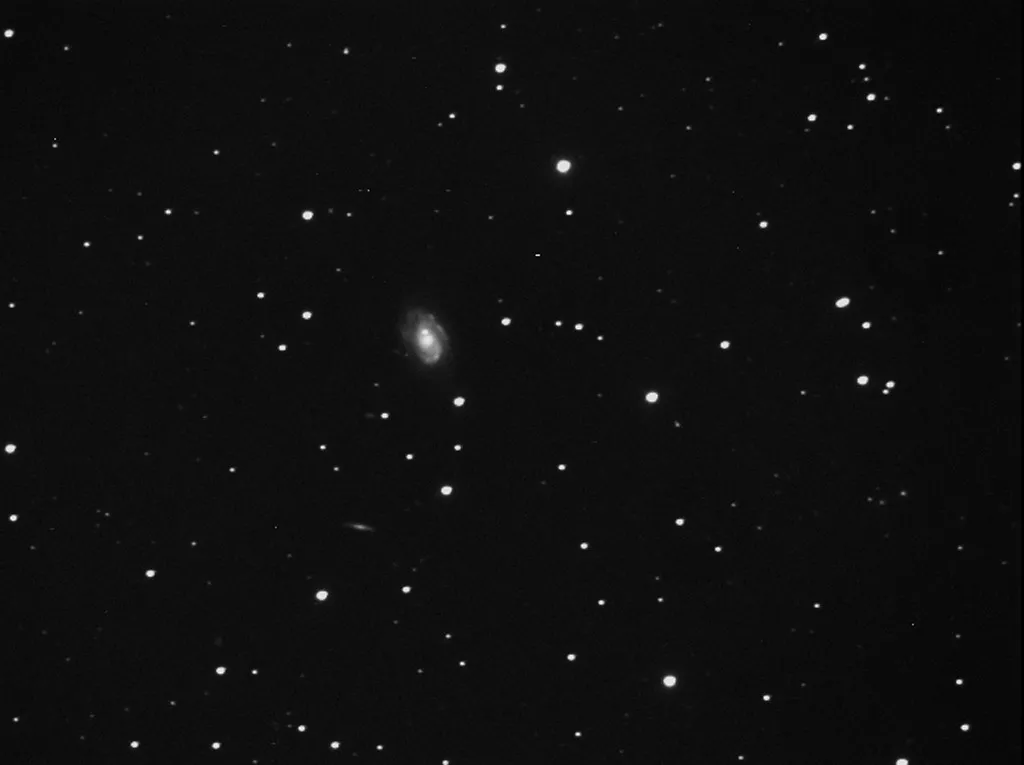
We head further west for our next target, a 12th magnitude spiral galaxy with an active nucleus catalogued as NGC 2916. The best way to locate it is to identify mag. +4.3 Alterf (Lambda (λ) Leonis). Alterf lies 3.2° west and 0.7° south of Algenubi (Epsilon (ε) Leonis), the last star in the Sickle’s ‘hook’. NGC 2916 sits 1.4° south-southeast of Alterf.
A 150mm scope will just about show it as a circular glow and although increased aperture helps, a 250mm scope won’t show much more than a brighter, elongated glow. A 300mm scope shows the galaxy’s stellar core and hints at mottling across its misty appearance.
5
NGC 2903
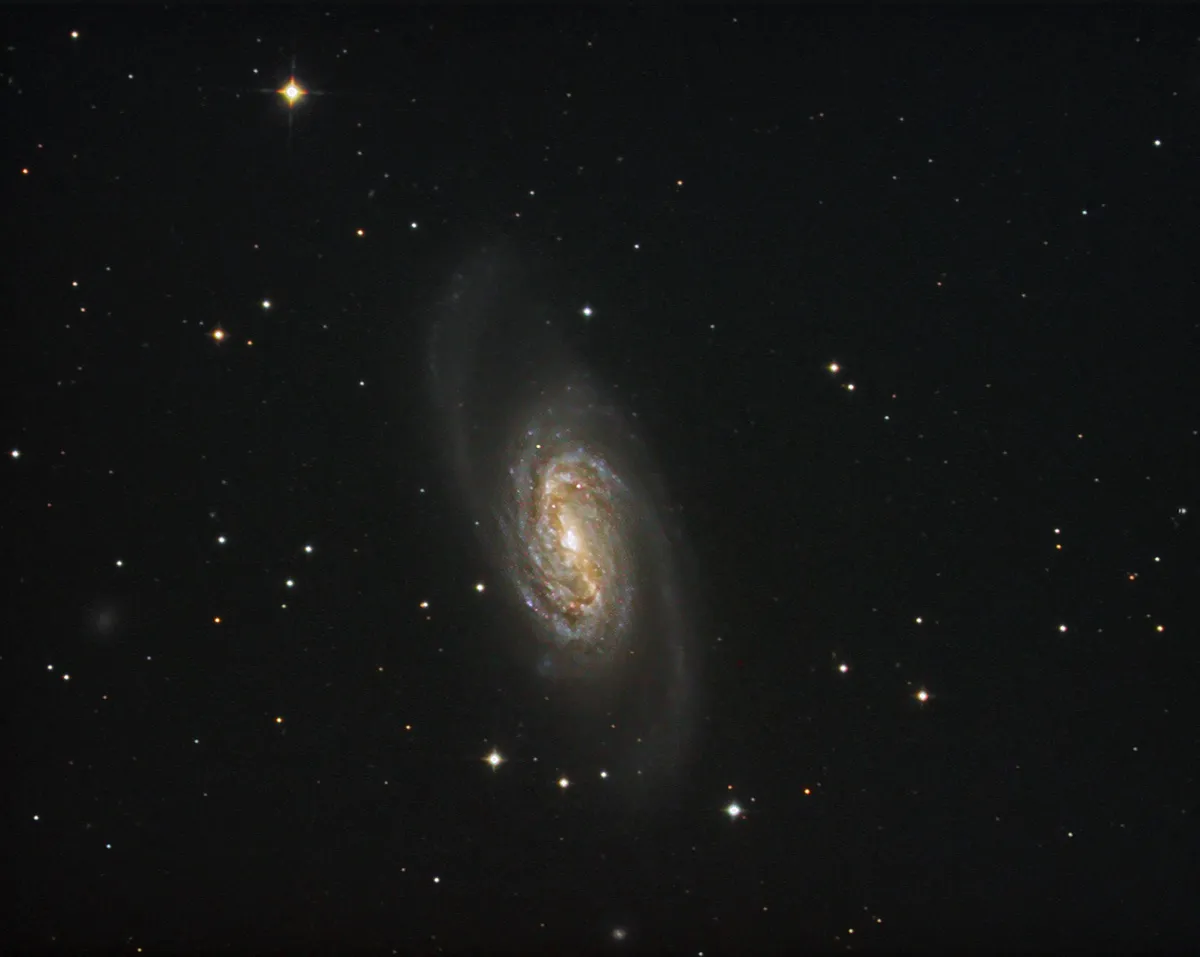
Our next target is a beauty. NGC 2903 is a bright, barred-spiral galaxy located 40 arcminutes west-southwest of NGC 2916 or, 1.5° due south and a fraction to the east of Alterf. It shines with an integrated magnitude of +8.9 and is easy to see with a 150mm scope. Such an instrument reveals an object 8x4 arcminutes in size and shows an unevenly lit core.
A 250mm scope picks out what appears to be the galaxy’s star-like nucleus well. A 300mm instrument shows this core to be extending, measuring 0.5x0.3 arcminutes. With such an instrument, the mottled outer halo appears brightest and easiest to see on the western side.
6
EGB 6
Our last target is a challenge. Ellis 6 also known as EGB (Ellis-Grayson-Bond) 6 is a faint planetary nebula near Regulus (Alpha (α) Leonis). It sits 4.1° west-northwest of Regulus, or for a better guide, imagine the mid-point of a line between Eta (ε) Leonis and Omicron (ο) Leonis. EGB 6 lies 0.3° west-northwest of this point.
It’s listed as mag. +10.3, but because it’s large with a diameter around 12 arcminutes, it has a low surface brightness. A 200mm instrument can show it, but you’ll need to use averted vision along with an OIII (Oxygen III) filter.
This article originally appeared in the February 2022 issue of BBC Sky at Night Magazine.

